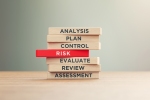September 20, 2013
The “ABCD’s” of Asset-Based Disaster Response
 September is National Disaster Preparedness Month. Episcopal Relief & Development’s US Disaster Program equips Episcopal dioceses in the United States to prepare for local disasters, mitigate their impact and help the vulnerable make a full and sustained recovery. This is the third in a series of four posts on parish disaster preparedness planning.
September is National Disaster Preparedness Month. Episcopal Relief & Development’s US Disaster Program equips Episcopal dioceses in the United States to prepare for local disasters, mitigate their impact and help the vulnerable make a full and sustained recovery. This is the third in a series of four posts on parish disaster preparedness planning.
Last week in this space we discussed how St. John Episcopal Church in Kenner LA used an inventory of its members to locate parishioners and anticipate their needs when Hurricane Isaac struck last year.
But this was not just a list of people to protect. It was also a list of people to mobilize. They are among the parish’s chief assets. And in effective disaster response, they will be among the gifts that can be effectively matched to community needs.
Thanks to its disaster plan, St. John’s leadership knows who has military and disaster response training and who can perform CPR if a disaster hits. It knows who can make food, contribute flashlights, or provide a generator. It even knows which member has offered to house pets for people who are evacuating.
St. John’s also knows its physical assets, which it can utilize in a disaster. Its disaster plan lists a parking lot where responders can park tractor-trailers. And it has a room available if outside groups need to store supplies.
How would the vestry know how best to mobilize these assets to do the most good after a disaster? For that, the parish can turn to another parish asset: its relationships in the community.
St. John’s has a long history of offering outreach to those recovering from addiction and hosts numerous AA and NA meetings. It also offers a weekly children’s art program that draws participants from as far as away as New Orleans East. And it has relationships with local groups who have responded to previous disasters.
While every disaster is different, such relationships offer the opportunity to learn the specific needs that vulnerable people may be experiencing throughout the long lifecycle of a disaster. A parish’s existing network of ministries and groups that serve the vulnerable is an important place to start.
In fact, St. John’s has all the ingredients of a good Asset Based Community Development (ABCD) approach to disaster response. In ABCD, a community mobilizes its own resources to shape programs and solutions that meet its unique goals and challenges.
It’s important to note here that asset-based approaches used in disaster response look a bit different from those in the typical community development model. A disaster, by definition, is an event that causes more damage than a community can recover from on its own. Outside help is a given, from responders to relief to rebuilding. But over time the outside help will diminish, and a community will be left to forge its own “new normal,” whatever shape that takes.
Which potential disaster responses reflect an asset-based approach, and which do not? The key is in matching gifts that the church actually has with needs that the community actually has.
Take for example the St. John’s parishioner who offered to house people’s animals during a disaster. The prospect of losing beloved pets during an evacuation is terrifying for some, and can even keep people from moving to safety. The parishioner’s gift anticipates a very real community need in an area prone to hurricanes.
The most common pitfall, though, is when a congregation has a great sense of its assets and no knowledge of the community’s need. The perennial example is that of the truckloads of donated clothing and furniture that make their way to stricken areas soon after a crisis hits the headlines. This can be a disaster in its own right when the convoys arrive before a community has a place to park them, store items or even assess if it needs them. Responders have reported pulling everything from bathing suits, to chandeliers to single shoes out of such donation piles. They overwhelm valuable space needed for essential resources. And dealing with the “gift” takes away volunteers who might be better used in other response efforts.
A congregation’s local relationships are at the heart of an asset-based response because they can help determine actual needs in a quickly changing landscape. In the ABCD equation, the local Episcopal congregation is not a community separate and apart from the neighborhood where the church building is located. The church itself is a community member, a neighbor. And as such, its gifts of “talent, time, and treasure” should be counted among a community’s resources, especially when it comes to responding to the needs of vulnerable people who often fall between the cracks of official recovery efforts.
Eventually the “cavalry” of outside disaster responders go home. But the local Episcopal congregation is not going anywhere. If it commits to making its gifts available to its community throughout disaster recovery, it will discover that the needs change continuously over time and the type of response that’s required changes with it.
But this flexibility to read the “signs of the times” after a disaster, to offer responses that are discerned from relationships with those most likely to fall between the cracks, to bring simple gifts to a huge enterprise – this is the art of church. It’s what we pray in our Book of Common Prayer, what we sing in our best hymns, what we proclaim in Scripture.
We are after all the body of Christ, Paul reminds us in his first letter to the Corinthians. If one part of the body suffers, all suffer. If one part is honored, all know its joy.
Episcopal Relief & Development offers a free Preparedness Planning Guide for Congregations and Parishes and an accompanying facilitator’s guide to walk congregations through the process of preparing for a disaster. These and other preparedness resources can be downloaded from the Episcopal Relief & Development’s Resource Library.





